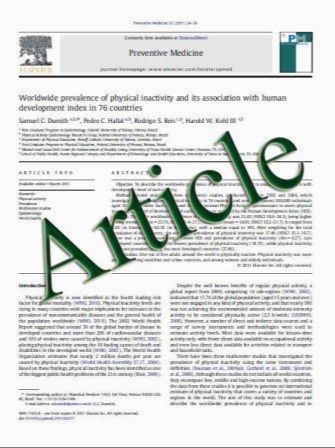Real-time polymerase chain reaction and intraocular antibody production for the diagnosis of viral versus toxoplasmic infectious posterior uveitis
- نوع فایل : کتاب
- زبان : انگلیسی
- مؤلف : Marie-Hélène Errera & Pablo Goldschmidt & Laurence Batellier & Sandrine Degorge & Emmanuel Héron & Laurent Laroche & José-Alain Sahel & Mark Westcott
- چاپ و سال / کشور: 2011
Description
Purpose The aim of this work was to determine the diagnostic performance of real-time polymerase chain reaction (RT-PCR) and to assess intraocular specific antibody secretion (Goldmann.Witmer coefficient) on samples from patients with signs of posterior uveitis presumably of infectious origin and to target the use of these two biologic tests in the diagnostic of Toxoplasma/ viral Herpesviridae posterior uveitis by the consideration of clinical behavior and delay of intraocular sampling. Methods Aqueous humour and/or vitreous fluid were collected from patients suspected of having posterior uveitis of infectious origin at presentation (140 samples). The diagnosis was confirmed by quantification of antibodies with the Goldmann.Witmer coefficient (GWC) and for detection of Herpesviridae and Toxoplasma gondii genomes with RT-PCR. Forty-one patients had final diagnosis of uveitis of non-Toxoplasma/non-viral origin and 35 among them constituted the control group. The main outcome measures were sensitivity, specificity, and positive and negative predictive values (PPVand NPV). Results When pre-intraocular testing indication was compared with final diagnosis, GWC was a more sensitive and specific method than RT-PCR, and was successful in detecting T. gondii, especially if the patient is immunocompetent and the testing is carried out later in the disease course, up to 15 months. For viral Herpesviridae uveitis, the sensitivity and PPV of PCR evaluation was higher than detected with GWC with respectively 46% compared with 20% for sensitivity and 85% versus 60% for PPV. In either viral retinitis or toxoplasmosis infection, RTPCR results were positive from 24 h, although GWC was not significant until 1 week after the onset of signs. In toxoplasmosis patients, positive RT-PCR results were statistically correlated with the chorioretinitis area (more than three disc areas; p=0.002), with the age older than 50 (p=0.0034) and with a clinical anterior inflammation (Tyndall .1/2+) and panuveitis; (p=0.0001). Conclusions For the diagnosis of viral or toxoplasmosisassociated intraocular inflammation, the usefulness of laboratory diagnosis tools (RT-PCR and GWC) depends on parameters other than the sensitivity of the tests. Certainpatient characteristics such as the age of the patients, immune status, duration since the onset of symptoms, retinitis area, predominant site and extent of inflammation within the eye should orientate the rational for the choice of laboratory testing in analysis of intraocular fluids.
Graefes Arch Clin Exp Ophthalmol DOI 10.1007/s00417-011-1724-7 Received: 23 October 2010 / Revised: 21 April 2011 / Accepted: 21 May 2011


